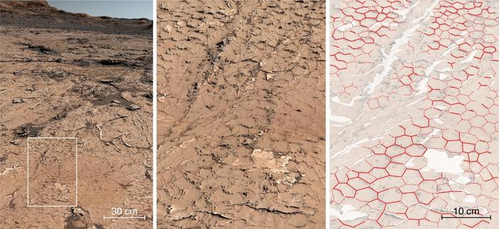Researchers have created a cutting-edge AI-based technique that can search for indicators of past or present life on Mars and other worlds.
The team claims that their Artificial Intelligence (AI)-based technology can accurately separate biological samples of modern and ancient times from those of abiotic origin with 90% precision in the journal Proceedings of the National Academy of Sciences (PNAS).
Lead author Jim Cleaves of the Earth and Planets Laboratory at the Carnegie Institution for Science in Washington, DC, stated that the quest for extraterrestrial life “remains one of the most tantalizing endeavors in modern science.”
“This new research has a wide range of consequences, but there are three key conclusions: Third, it is likely that this new method could distinguish alternative biospheres from those of Earth, with significant implications for future astrobiology missions,” Cleaves said. “First, it is likely that this new method could distinguish alternative biospheres from those of Earth. At some fundamental level, biochemistry differs from abiotic organic chemistry.
The cutting-edge analytical technique does not just identify a single molecule or collection of substances in a sample.
Instead, by identifying subtle differences in a sample’s molecular patterns as revealed by pyrolysis gas chromatography analysis (which separates and identifies a sample’s component parts), followed by mass spectrometry (which establishes the molecular weights of those components), the researchers showed that AI can distinguish biotic from abiotic samples.
The origin of a new sample was trained using a vast amount of multidimensional data from the molecular analyses of 134 known abiotic or biotic carbon-rich samples.
Approximately 90% of the time, AI was successful in determining the origins of samples, including samples with abiotic origins like pure laboratory chemicals (like amino acids) and carbon-rich meteorites, as well as living things like modern shells, teeth, bones, insects, leaves, rice, human hair, and cells preserved in fine-grained rock.
The scientists said that because collections of organic molecules, whether biotic or abiotic, have a tendency to deteriorate with time, it has previously been challenging to pinpoint the origins of many ancient carbon-bearing materials.
Surprisingly, the new analytical technology found evidence of biology survived in some cases across hundreds of millions of years, despite severe decay and modification.
These findings suggest that, even if it is quite different from the life we are familiar with on Earth, we could be able to locate a life form from another planet or environment. And if we do discover evidence of life elsewhere, we will be able to determine whether life on Earth and other planets originated from a similar or distinct source, according to laboratory director Dr. Robert Hazen.











